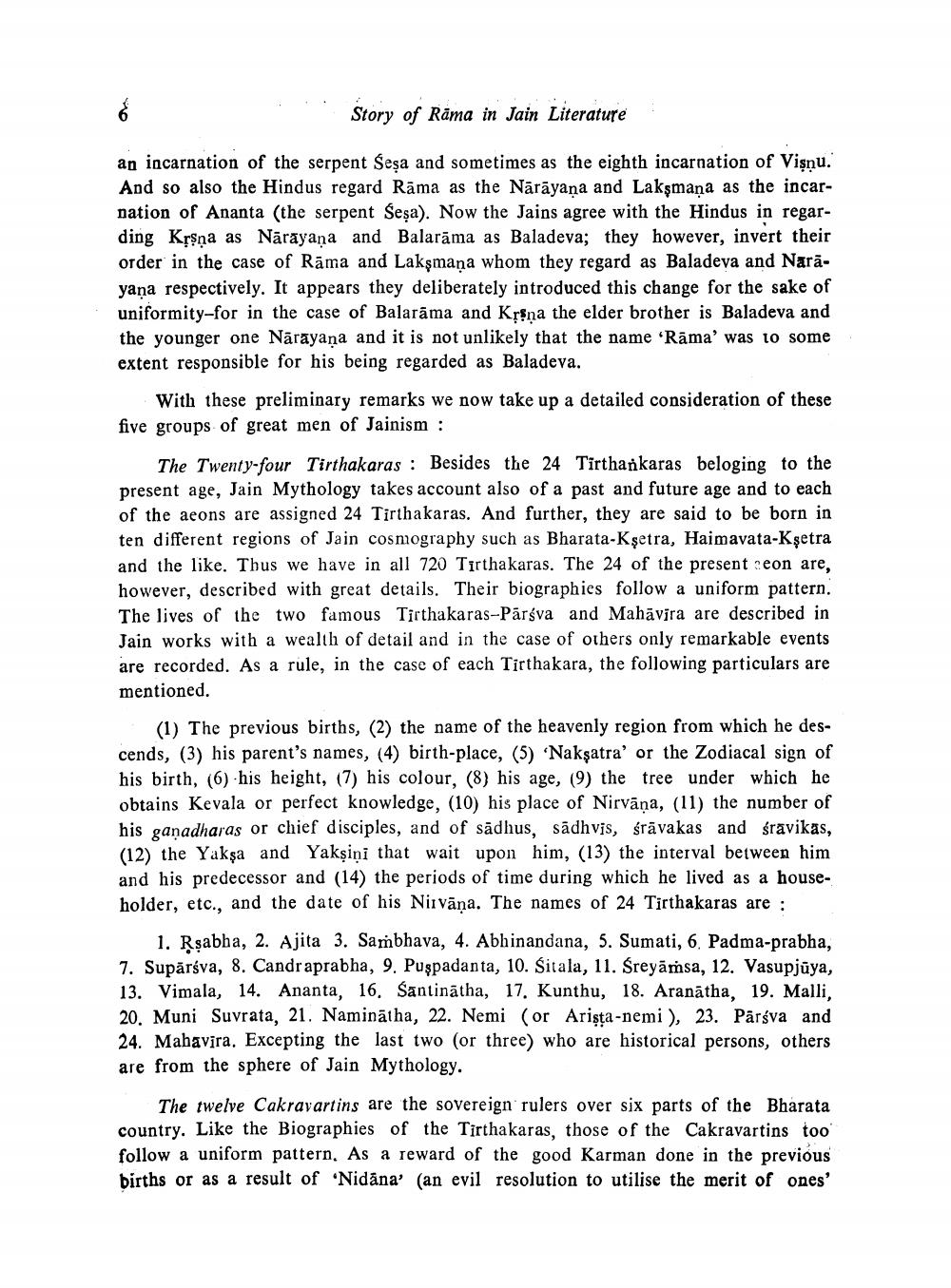________________
Story of Rāma in Jain Literature
an incarnation of the serpent Seșa and sometimes as the eighth incarnation of Vişnu. And so also the Hindus regard Rāma as the Nārāyaṇa and Lakşmaņa as the incarnation of Ananta (the serpent Sesa). Now the Jains agree with the Hindus in regarding Krşņa as Narayana and Balarama as Baladeva; they however, invert their order in the case of Rāma and Lakşmaņa whom they regard as Baladeva and Narā. yaņa respectively. It appears they deliberately introduced this change for the sake of uniformity-for in the case of Balarama and Krena the elder brother is Baladeva and the younger one Nārāyaṇa and it is not unlikely that the name "Rāma' was to some extent responsible for his being regarded as Baladeva.
With these preliminary remarks we now take up a detailed consideration of these five groups of great men of Jainism :
The Twenty-four Tirthakaras : Besides the 24 Tirtharkaras beloging to the present age, Jain Mythology takes account also of a past and future age and to each of the aeons are assigned 24 Tirthakaras. And further, they are said to be born in ten different regions of Jain cosmography such as Bharata-Kșetra, Haimavata-Kşetra and the like. Thus we have in all 720 Tirthakaras. The 24 of the present seon are, however, described with great details. Their biographies follow a uniform pattern. The lives of the two famous Tirthakaras-Pārsva and Mahāvira are described in Jain works with a wealth of detail and in the case of others only remarkable events are recorded. As a rule, in the case of each Tirthakara, the following particulars are mentioned.
(1) The previous births, (2) the name of the heavenly region from which he descends, (3) his parent's names, (4) birth-place, (5) Nakşatra' or the Zodiacal sign of his birth, (6) his height, (7) his colour, (8) his age, (9) the tree under which he obtains Kevala or perfect knowledge, (10) his place of Nirvāṇa, (11) the number of his ganadharas or chief disciples, and of sadhus, sādhvis, śrävakas and sravikas, (12) the Yakșa and Yakşini that wait upon him, (13) the interval between him and his predecessor and (14) the periods of time during which he lived as a householder, etc., and the date of his Niivāna. The names of 24 Tirthakaras are :
1. Rsabha, 2. Ajita 3. Sambhava, 4. Abhinandana, 5. Sumati, 6. Padma-prabha, 7. Supārsva, 8. Candraprabha, 9. Puşpadanta, 10. Sitala, 11. Sreyāṁsa, 12. Vasupjūya, 13. Vimala, 14. Ananta, 16. Santinātha, 17. Kunthu, 18. Aranātha, 19. Malli, 20. Muni Suvrata, 21. Naminātha, 22. Nemi (or Arişta-nemi), 23. Pārsva and 24. Mahavira. Excepting the last two or three) who are historical persons, others are from the sphere of Jain Mythology.
The twelve Cakravartins are the sovereign rulers over six parts of the Bharata country. Like the Biographies of the Tîrthakaras, those of the Cakravartins too follow a uniform pattern. As a reward of the good Karman done in the previous births or as a result of 'Nidāna' (an evil resolution to utilise the merit of ones'




